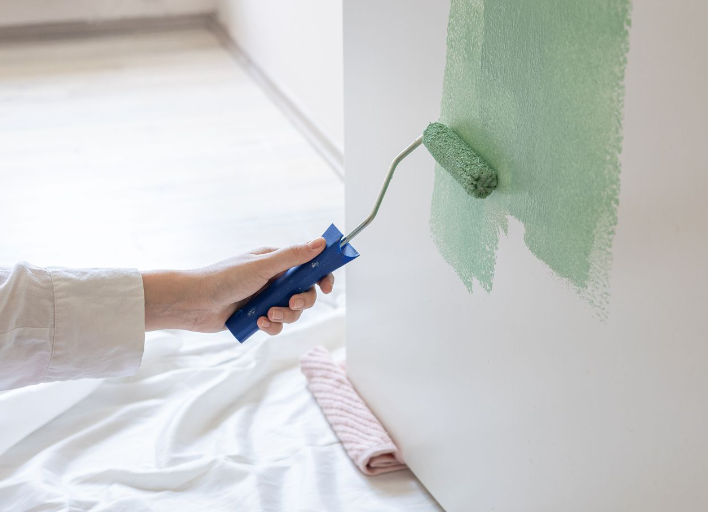Methyl Hydroxyethyl Cellulose (MHEC) is a crucial additive in the paints and coatings industry, known for its ability to enhance consistency, stability, and application properties. This article explores the various applications and uses of MHEC in improving the consistency of paints and coatings, highlighting its benefits and key roles in product formulations.
Introduction to MHEC
Methyl Hydroxyethyl Cellulose (MHEC) is a cellulose ether derived from natural cellulose through chemical modification. This modification introduces methyl and hydroxyethyl groups into the cellulose structure, enhancing its solubility, viscosity, and film-forming properties. These characteristics make MHEC a valuable additive in a wide range of applications, particularly in paints and coatings.
Key Properties of MHEC
- Water Solubility
- MHEC is readily soluble in water, forming clear and homogeneous solutions that enhance the consistency of aqueous formulations.
- Thickening and Rheology Modification
- MHEC acts as a thickener and rheology modifier, providing desirable viscosity and flow properties to paints and coatings.
- Film-Forming Ability
- It forms flexible and durable films, improving the mechanical properties and durability of coatings.
- Stability
- MHEC stabilizes emulsions and suspensions, preventing phase separation and ensuring a uniform product.
- Water Retention
- It enhances water retention, preventing premature drying and improving the workability and finish of coatings.
Applications of MHEC in Paints and Coatings
- Architectural Paints
- Consistency Improvement: MHEC provides excellent consistency and viscosity control, ensuring smooth and even application of architectural paints.
- Application Properties: It enhances brushability and rollability, allowing for easier application and improved surface coverage.
- Sag Resistance: MHEC improves sag resistance, preventing drips and ensuring a uniform finish, especially on vertical surfaces.
- Film Formation: It aids in forming a strong, flexible film that enhances the durability and appearance of the paint.
- Industrial Coatings
- Thickening Agent: MHEC acts as a thickening agent in industrial coatings, providing the desired viscosity for various application methods such as spraying, brushing, or rolling.
- Stability: It stabilizes the formulation, preventing sedimentation and phase separation, ensuring consistent performance.
- Surface Protection: The film-forming properties of MHEC enhance the protective qualities of industrial coatings, providing resistance to environmental factors and mechanical wear.
- Textured Coatings
- Enhanced Texture: MHEC improves the consistency and texture of textured coatings, allowing for creative and aesthetic finishes.
- Uniform Application: It ensures a uniform application, preventing clumping and uneven textures.
- Water Retention: MHEC’s water retention properties prevent premature drying, allowing for better manipulation and finishing of textured surfaces.
- Water-Based Paints
- Viscosity Control: MHEC provides excellent viscosity control in water-based paints, ensuring smooth flow and application.
- Stability: It stabilizes the dispersion of pigments and fillers, preventing settling and ensuring a uniform color distribution.
- Brushability and Leveling: MHEC enhances brushability and leveling properties, resulting in a smooth and even paint film without brush marks or streaks.
- Primers and Sealers
- Adhesion Improvement: MHEC improves the adhesion properties of primers and sealers, ensuring better bonding to substrates and subsequent topcoats.
- Film Integrity: It enhances the film integrity of primers, providing a solid foundation for topcoats and improving overall durability.
- Water Retention: MHEC’s water retention capabilities ensure proper curing and setting of primers and sealers, preventing issues such as cracking or peeling.
Benefits of Using MHEC in Paints and Coatings
- Enhanced Consistency
- MHEC provides a consistent and stable viscosity, ensuring uniform application and finish across various surfaces and conditions.
- Improved Workability
- It enhances the workability of paints and coatings, making them easier to apply and manipulate, resulting in better coverage and finish.
- Increased Durability
- The film-forming properties of MHEC contribute to the durability and longevity of the coating, providing resistance to environmental factors and wear.
- Cost-Effectiveness
- MHEC improves the efficiency of paint formulations, reducing the need for additional additives and enhancing overall performance, leading to cost savings.
Factors to Consider When Using MHEC
- Viscosity Selection
- Choose the appropriate viscosity grade of MHEC based on the specific requirements of the paint or coating formulation.
- Compatibility
- Ensure compatibility of MHEC with other components in the formulation to achieve optimal performance and stability.
- Environmental Conditions
- Consider the environmental conditions during application, as factors such as temperature and humidity can affect the performance of MHEC in the coating.
Conclusion
Methyl Hydroxyethyl Cellulose (MHEC) plays a crucial role in enhancing the consistency, stability, and application properties of paints and coatings. Its benefits, including improved viscosity control, film formation, and workability, make it an essential additive in the formulation of high-performance architectural, industrial, and textured coatings. By selecting the appropriate grade and incorporating MHEC into their formulations, manufacturers can achieve superior results, ensuring durable, aesthetically pleasing, and easy-to-apply paints and coatings.


